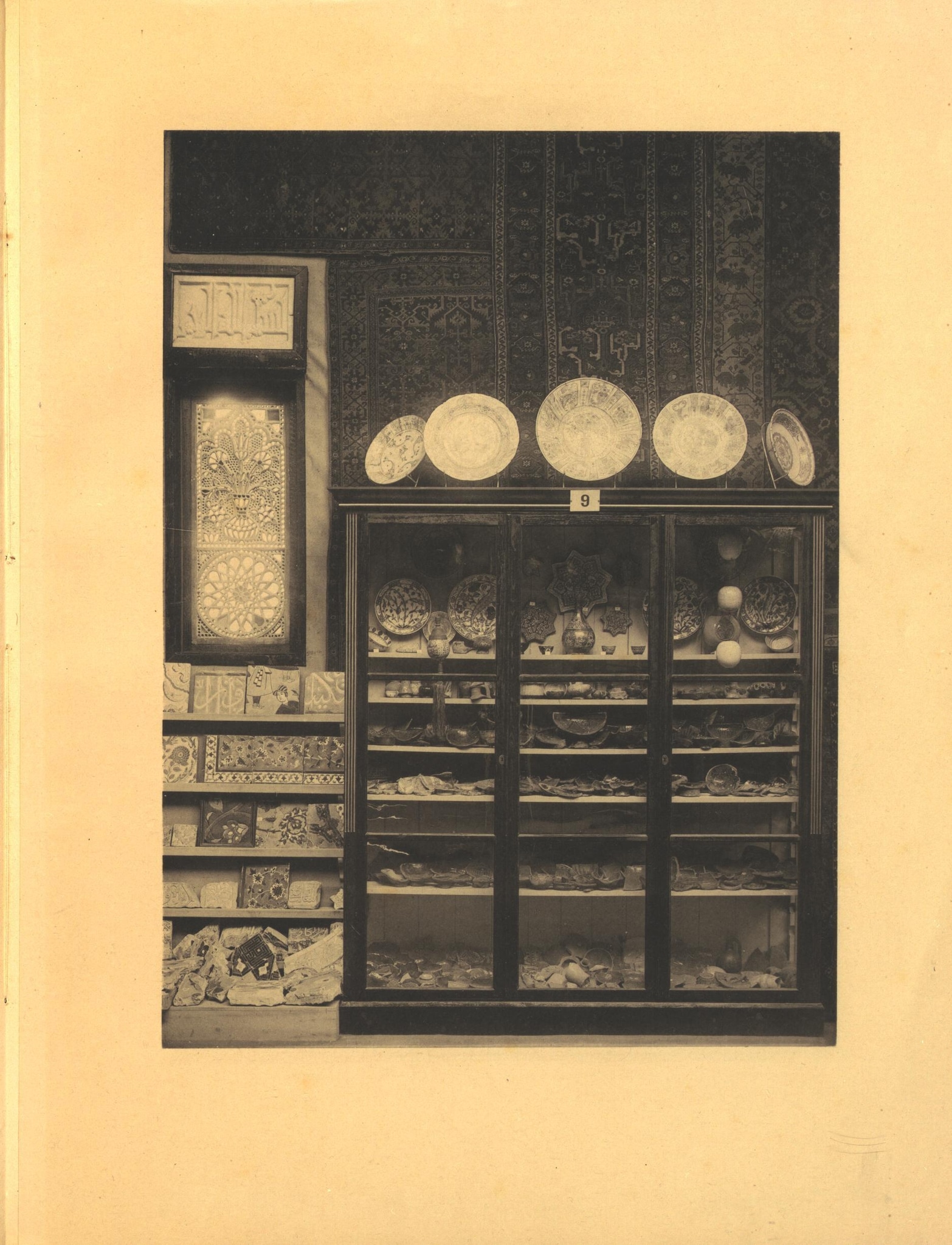This catalogue accompanied the exhibition of objects from the ‘Orient’ from the collection of Frederik Robert Martin (1868–1933) at the General Art and Industrial Exposition of Stockholm in 1897 and includes photographs of the exhibition setting. The seventh exhibition view shows display case nine, tile fragments on a shelf, carpets hanging on the wall, and a stucco and glass window installed in the wall.
The window is made of a wooden frame filled with perforated stucco. It is divided into two sections, one surmounting the other. The upper one contains a vase with five flowers in bloom. A central tulip is flanked by carnations arranged symmetrically on each side in front of a background with many small, perforated holes. The flower and vase motif is framed by a band of holes in a row forming a polylobed arch on the top. The spandrels show a similar band framing three relatively large openings on each side. The lower square section shows a sixteen-pointed star with an eight-pointed flower in its centre, inscribed in a circle. Like the upper section, the spandrels have a band of holes in a row, but here framing one triangular opening.
Although this is a black and white photograph, it is possible to understand that glass inlays of different colours were used. In the upper section, the square openings in the spandrels, the centres of the carnations, the lines on the neck of the vase, and, in the lower section, the central flower and two drop-shaped openings between the star points were backed with dark pieces of glass.
25G41(CARNATION) · fleurs : oeillet
25G41(TULIP) · fleurs : tulipe
41A6711 · fleurs dans un vase
48A981 · ornement ~ motifs géométriques
48A9815 · ornement ~ formes étoilées
48A9833 · fleurs ~ ornement
